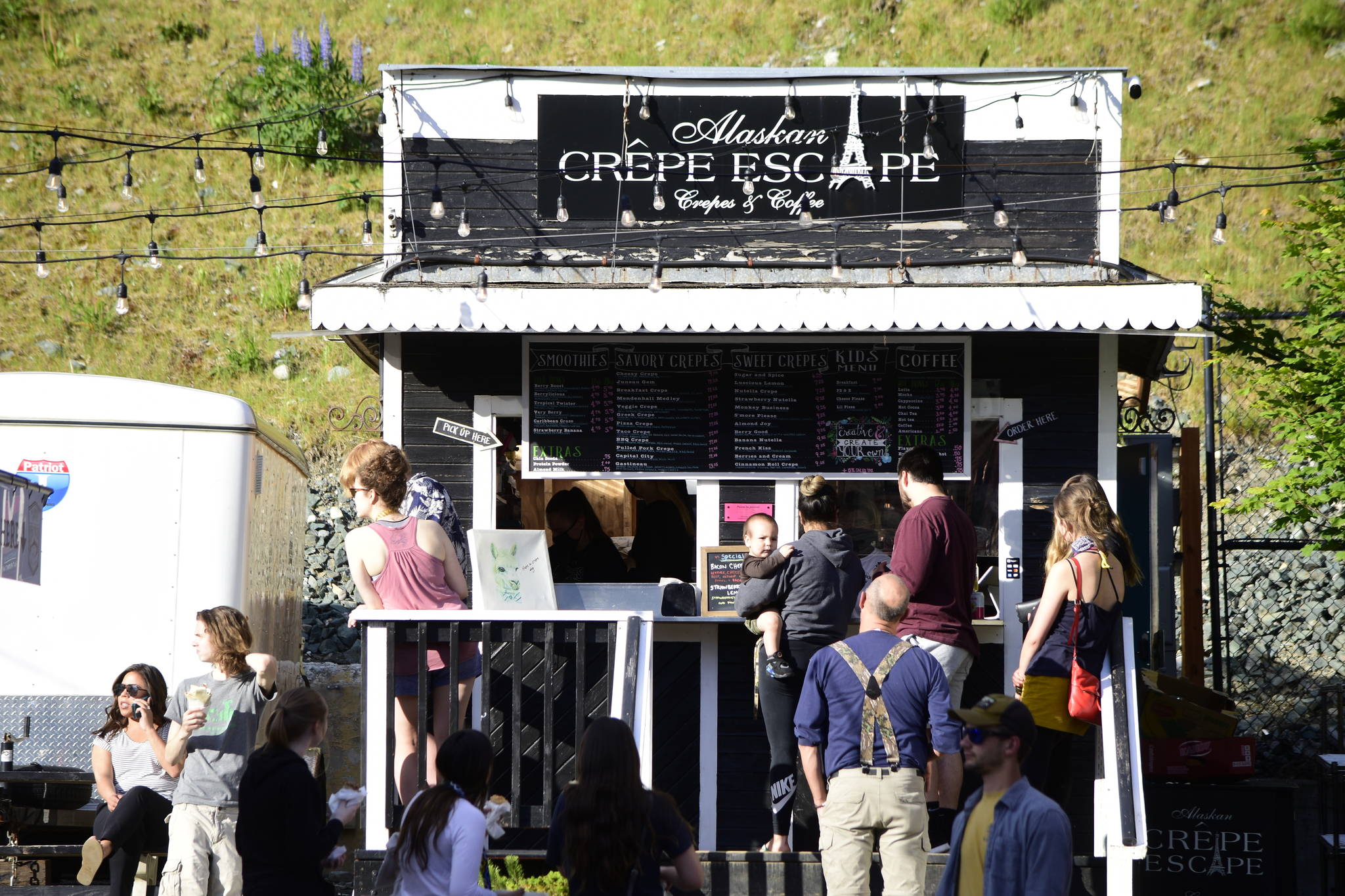Despite the rise in cases and calls from the medical community for the state to enact health mandates, Gov. Mike Dunleavy said he is not willing to take “universal approaches” to managing the coronavirus pandemic.
“That initial modeling we were presented showed a lot of deaths,” Dunleavy said, referring to early predictions about the virus. “Those predictions resulted in actions in Alaska to flatten the curve. Those actions came at a price. They came at a price for our economies.”
But now that the coronavirus has not been as lethal as predicted, he said, a more surgical approach is needed. The state reported a record number of cases over the weekend, and the number of hospitalizations and deaths rose slightly.
Despite that, Alaska is still doing a pretty good job, Dunleavy said and the state’s overall hospitalization and death rate is much lower than other states.
He also reiterated the importance of wearing a mask when distancing is difficult and said he would support local mask mandates, such as the one recently passed in Juneau.
Dunleavy also announced a change in the rules for travelers coming into the state. Out-of-state travelers will be required to produce negative test results from the past 72 hours in order to enter the state, Dunleavy said. Previously those without test results could be tested at the airport and quarantine until their results come back negative.
The state’s supplies of personal protective equipment are being drawn down, the governor said, and needed or Alaskans. Those requirements will begin Aug. 11, Dunleavy said.
He said how the new requirements will be enforce will be worked out in the coming days.
Driving the state’s spike in numbers are several outbreaks at seafood processing facilities that occurred within days of each other, according to state epidemiologist Dr. Joe McLaughlin, and an increase among young adults in their 20s and 30s. The increase in young adults could be attributed to several factors, McLaughlin said, including younger people being less likely to comply with health precautions and more likely to congregate at bars or other organized gatherings. Young adults are also more likely to physically go in to work, McLaughlin said, meaning they were more likely to be exposed.
[State reports 137 new COVID-19 cases]
Several health experts, who testified Tuesday afternoon at a House Health and Social Services Committee meeting, said hospitals and other health care providers are worried about straining their capacity in the face of a sudden spike of patients in need of hospitalization.
Hospitalizations are likely to follow from high case counts, said Dr. Nick Papacostas, Vice President of the Alaska chapter of the American College of Emergency Physicians.
“There’s a lag time, we just haven’t seen (hospitalizations) starting to pick up yet, I’m worried we will see our hospitalizations increase,” he said.
Papacostas testified alongside Dr. Thomas Hennessy, Infectious Disease Epidemiologist, University of Alaska Anchorage Epidemiology; Jared Kosin, president and CEO, Alaska State Hospital and Nursing Home Association; Dr. Ellen Hodges, chief of staff, Yukon-Kuskokwim Health Corporation; and Medical Director of Community and Health Systems Improvement Dr. Bob Onders, Alaska Native Tribal Health Consortium.
“The situation is rapidly worsening,” Hennessy said. “There’s been an increase in the number of regions, this increase was predictable and was predicted by the mathematical models. We stopped the shelter in place, and not enough Alaskans followed the measures for public health.”
The Division of Public Health is no longer able to keep up with contact tracing, Hennessy said, and if the pattern of positive cases and hospitalizations increases at the current rate, hospitals would be straining their Intensive Care Unit capacities by Sept. 20.
“I would like to see the state of Alaska take the leadership to protect the public health, a mandate would send a strong signal to Alaskans that we need to take action. The longer we wait the worse it will get,” he said.
But state health representatives said the state’s health care capacity is currently able to handle the rise in cases, and had already taken several actions to protect the health of Alaskans.
Department of Health and Social Services Commissioner Adam Crum said the department has been working with local municipalities to understand what tools they had locally to implement their own health care regulations.
Rep. Tiffany Zulkosky, who chaired the House Health and Social Services Committee, repeatedly pressed Crum about why there hasn’t been a statewide mandate. Crum said mask mandates were largely about “what is appropriate at what point in time, how (people) can keep themselves safe and others.”
The state is closely monitoring congregate settings like hospitals, nursing homes and prisons, and had so far avoided mass hospitalizations, Crum told the committee. Pressed again, Crum deferred to Gov. Mike Dunleavy’s press conference to be held later that day.
But the health officials said the increasing numbers are too concerning to ignore.
“The intent today is to alarm you. Hospital capacity today, and only today, is functioning as normal,” Kosin said.
Several of the testifiers warned about the coronavirus spread among staff. Positive cases among staff could lead to fewer numbers of health workers during a spike in cases, according to Kosin.
“The story’s been written before,” he said, referring to countries such as Italy where hospitals were overloaded with patients and forced to make life-and-death decisions about who receives health care.
“We have alternate care plans, we will change the way we operate, but that doesn’t take those hard decisions away,” Kosin said.
• Contact reporter Peter Segall at psegall@juneauempire.com. Follow him on Twitter at @SegallJnoEmpire.

